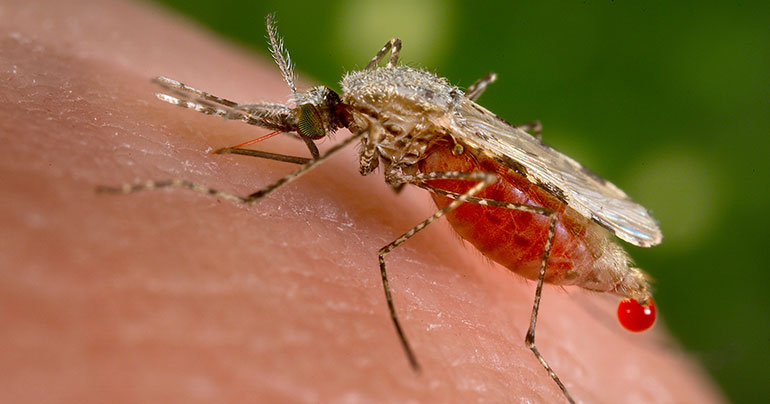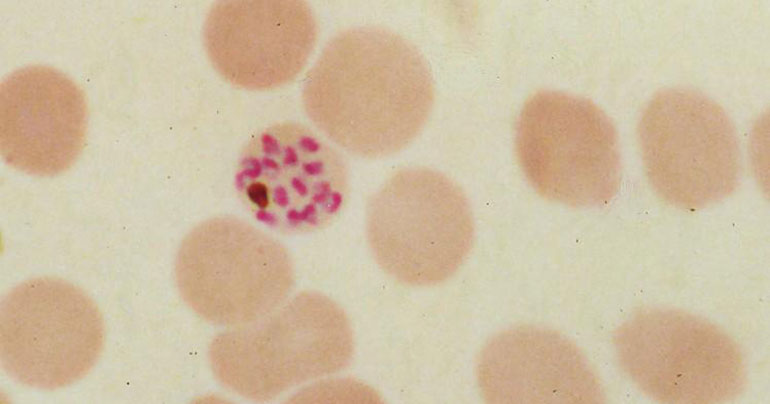Researchers in Singapore have discovered that a gold molecule may be effective as a new type of anti-malarial drug – even against drug-resistant malaria parasites

Plasmodium, the parasite that causes the deadly disease malaria, may have met its match. Researchers from the Singapore University of Technology and Design (SUTD) and Nanyang Technological University of Singapore have created a range of molecules that contain gold, which was effective in killing the parasite by damaging its metabolic functions.
The study, published last December in the journal Dalton Transactions, highlights the gold-based compound that kills the Plasmodium parasite by causing its digestive vacuoles to swell. The vacuole is the part of the cell that cleans and expels waste and unwanted products, acting as the “intestines” of each cell.
The gold molecule G3 showed the highest potential to kill Plasmodium parasites. When a person gets sick with malaria, the parasite feeds off the host’s hemoglobin, the part of the red blood cells used to transport oxygen through the body. When G3 damages Plasmodium’s vacuole, the parasite cannot digest hemoglobin and it dies.
According to Dr Sumod Pullarkat of Nanyang Technological University, one of the researchers of the study, G3 is flexible enough to be modified to include various other molecular components, which would allow future researchers to fine-tune it for developing drugs.

Malaria is a deadly disease that is widespread in tropical regions, including Southeast Asia. It has been eradicated or greatly reduced around the world. There were 219 million cases of malaria and 435,000 deaths from the disease in 2017, according to statistics from the World Health Organization (WHO). The majority of malaria cases in Southeast Asia are caused by the Plasmodium falciparum strand, which was used by the researchers in Singapore.
Areas of Southeast Asia have become hotbeds of malarial resistance to medicine, especially to the standard drugs from the artemisinin family, derived from the sweet wormwood plant. Resistance of Plasmodium falciparum to artemisinin was first seen in 2008 along Cambodia-Thailand border areas, and resistance has now spread to parts of other countries along the Mekong River, including Laos, Myanmar and Vietnam.
Another researcher who worked on the study, Dr Rajesh Chandramohanadas of SUTD, said the rising drug resistance is due to “ever-transforming resistant varieties of the parasite, coupled to human migration and inefficient control of drug administration in endemic areas.”
Malaria that is resistant to multiple drugs has become prevalent in the Cambodia-Thailand border area, and now there are fears that malaria may become untreatable within a few years.
[manual_related_posts]
A large reason for the growth of drug-resistant malaria has been the regional market for fake drugs. Artemisinin drugs that are poor quality or diluted may have contributed to resistance against the drugs in the Cambodia-Thailand border region, according to a 2012 report.
The gold molecule G3 could usher in an entirely new class of anti-malarial drugs to which Plasmodium has not yet developed resistance. Getting the drug to the market could take years – fine-tuning the compound, conducting pre-clinical studies and finally undergoing clinical testing. On top of that, the drug would have to undergo further tests to ensure against toxicity to humans and a lack of resistance development.
Chandramohanadas is hopeful that it will be very difficult for Plasmodium falciparum to develop resistance to G3 molecules: “Due to the broad activity against a critical survival pathway, indications are that the parasites are unlikely to gain resistance against digestive vacuole disrupting agents such as G3.”
Glimmering hope
Could gold be key to fighting malaria?
Researchers in Singapore have discovered that a gold molecule may be effective as a new type of anti-malarial drug – even against drug-resistant malaria parasites

